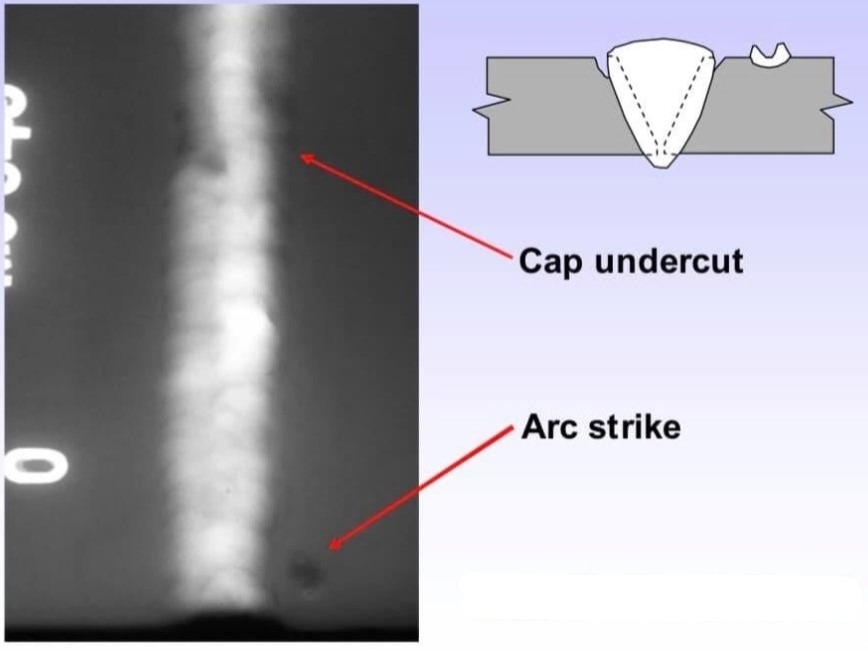Mastering the Art of Welding: Exactly How to Prevent Undercut Welding Issues for Flawless Manufacture Outcomes
By comprehending the root causes of undercut welding and executing efficient techniques to prevent it, welders can boost their craft to brand-new levels of excellence. In the quest of flawless manufacture outcomes, grasping the art of welding to prevent undercut problems is not just an ability however a requirement for those aiming for perfection in their job.
Understanding Undercut Welding

To avoid undercut welding, welders ought to make sure proper welding criteria, such as adjusting the present, voltage, travel speed, and preserving the proper electrode angle. Furthermore, utilizing the suitable welding method for the particular joint configuration is necessary. Employing weaving movements or backstepping methods can aid guarantee appropriate weld metal deposition and lower the chance of undercut formation. Routine evaluation of welds during and after the welding process is likewise crucial to catch any type of undercut early and make necessary changes to avoid additional issues. Preventing weld undercut. By recognizing the causes of undercut welding and applying safety nets, welders can accomplish high-grade, structurally sound welds.
Sources Of Undercut in Welding
Recognizing the factors that add to damage in welding is important for welders to create high-grade, structurally audio welds. Damaging takes place when the weld steel does not appropriately fill the groove developed between the base metal and the formerly transferred weld metal. Several elements can lead to damage in welding. One typical cause is too much warmth input. Welding at heats for prolonged periods can result in the base metal thawing greater than desired, leading to undercut. Inadequate welding current or wrong welding speed can likewise add to damage. Insufficient current might not provide adequate heat to thaw the base and filler metals properly, while excessive rate can avoid correct combination, causing undercut. Furthermore, improper electrode angles or wrong torch control techniques can create locations of low weld steel deposition, promoting undercut. Recognizing these causes and applying proper welding strategies can help stop damaging issues, making certain durable and solid welds.
Methods to stop Undercutting

To minimize the threat of damaging in welding, welders can use tactical welding strategies focused on improving the high quality and stability of the weld joints. One effective approach is to adjust the welding criteria, such as voltage, present, and take a trip rate, to make certain correct warmth input and deposition. Preserving an appropriate electrode angle and making certain regular traveling speed can also aid avoid undercut. In addition, using the appropriate welding strategy for the specific joint configuration, such as weave or stringer grains, can add to minimizing undercutting. Preventing weld undercut.
Furthermore, appropriate joint preparation, including ensuring tidy base products devoid of impurities and utilizing the appropriate welding consumables, is vital in preventing undercut defects. Utilizing back-step welding techniques and managing the weld bead profile can also assist distribute warm evenly and reduce the threat of undercut. Regular inspection of the weld joint throughout and after welding, along with executing top quality assurance actions, can aid in resolving and look at here finding undercutting problems immediately. By executing these strategies diligently, welders can accomplish perfect manufacture results with very little undercut issues.
Value of Appropriate Welding Criteria
Picking and keeping ideal welding criteria is crucial for achieving successful welds with minimal defects. Welding parameters describe variables such as voltage, existing, take a trip rate, electrode angle, and shielding gas circulation price that directly influence the welding procedure. These criteria have to be meticulously changed based upon the sort of material being welded, its thickness, and the welding method employed.
Correct welding criteria make sure the ideal amount of heat is related to thaw the base metals and filler product consistently. If the specifications are set also high, it can cause extreme warmth input, triggering spatter, distortion, or burn-through. On the other hand, if the parameters are as well low, incomplete blend, lack of infiltration, or undercutting might take place.
Quality Control in Welding Workflow

Verdict
In verdict, grasping the art of welding needs a comprehensive understanding of undercut welding, its causes, and techniques to prevent it. By ensuring correct welding criteria and executing quality assurance techniques, remarkable manufacture results can be accomplished. It is important for welders to regularly strive for quality in their her response welding operations to stay clear of undercut problems and produce top quality welds.
Undercut welding, a common defect in welding procedures, happens when the weld steel doesn't properly load the groove and leaves a groove or anxiety along the welded joint.To protect against undercut welding, welders ought to ensure correct welding criteria, such as readjusting the current, voltage, traveling speed, and keeping the appropriate electrode angle. Inadequate welding wrong or current welding rate can also contribute to damage.To reduce the threat of undercutting in welding, welders can utilize strategic welding methods intended at improving the top quality and integrity of the weld joints.In final thought, understanding the art of welding needs a complete understanding of undercut welding, its causes, and techniques to avoid it.